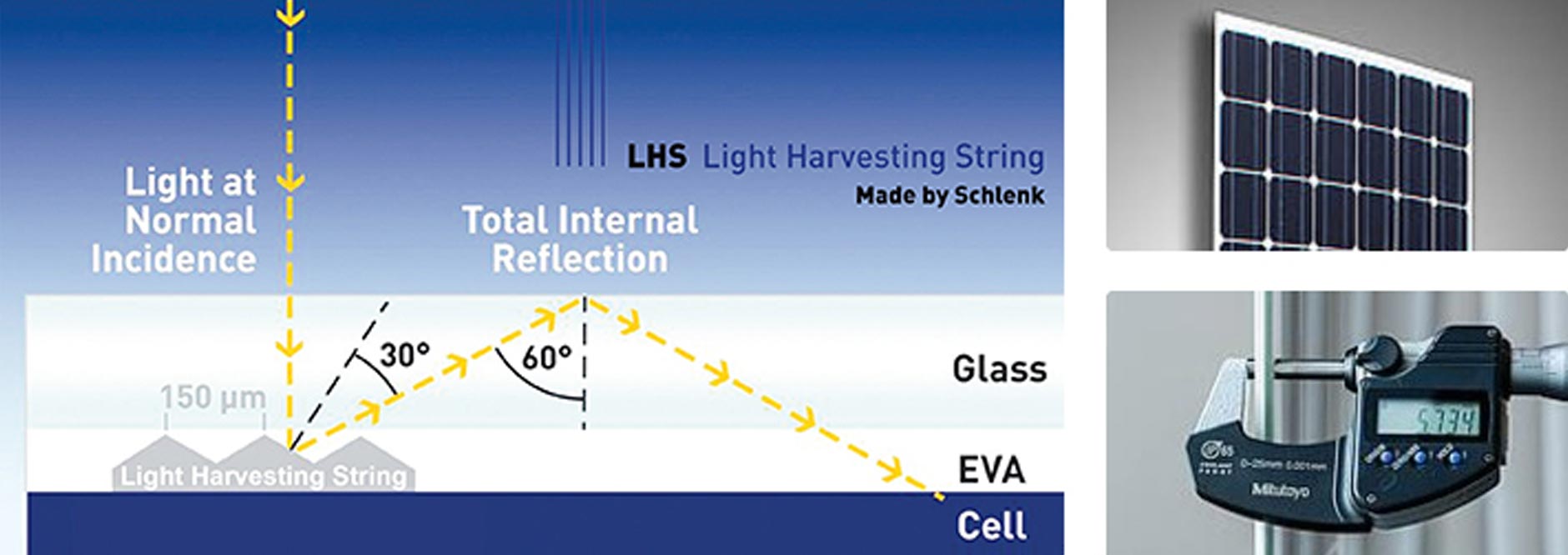Innovative high performance modules with LHS Select connectors
- Reduces optical losses – Maximizes total yield
- More than the sum of its parts: using corresponding products results in an increase in efficiency of more than 5%
- Fraunhofer CSP develops an innovative test for qualifying optical losses
The Fraunhofer Research-Center for Silicon-Photovoltaics CSP works with the companies f solar GmbH, KURARAY Europe GmbH and SCHLENK Metal Foils to increase solar module efficiency: the three companies combined their respective products in test modules and the best possible combination was researched. For this research, the Fraunhofer CSP developed an innovative characterization method that investigated and evaluated all of the individual components. The exact adjustment of each individual component results in an increase in efficiency of more than 5% in the newly created overall system.
The goal of the three companies was to reduce optical losses in solar modules in order to maximize the total yield. Among other items, the products combined in one solar module included thin (2 mm) solar glass with an anti-reflective coating (ARC) by f solar with special UV-permeable polyvinyl butyral plastic film (PVB) by Kuraray and light harvesting strings (LHS) by Schlenk, one equipped with longitudinal grooves. The independent Fraunhofer CSP research center investigated which combinations yielded which improvements. Electrical and optical characterization methods were used to analyze, determine and verify each individual component's effect and the related interactions in the "overall module system".
The solar modules were manufactured at Fraunhofer CSP and underwent electrical and optical measuring. Initially, a wide variety of single cell mini-modules made of various material combinations were produced, followed by optimized 54 cell modules, which were all compared with standard modules: "We were able to show that the optical losses in the combined (glass-glass) modules with 2 mm glass with anti-reflective coating, particularly UV-permeable PVB and LHS connectors, were reduced by nearly 40 percent in comparison with the standard module," explains Dr. Jens Schneider, Team Leader of the Module Technology Center at Fraunhofer CSP. The resulting performance gains from all of the approaches for reducing optical losses were measured on 54 cell modules. In comparison with a conventional module, electricity and efficiency both demonstrated relative increases of over five percent.
At the PV SEC 2013 in Paris, the most significant conference for researchers and industry experts, there was an interesting lecture by Fraunhofer CSP on this subject.
About the LHS connector in the solar module:

By using a light harvesting string (LHS) of type LHS SILVERED by Schlenk, performance was increased by up to 3%. The precisely structured surface of the silver-clad ribbon directs the sunlight to the air/glass boundary layer at a precisely defined angle, resulting in "total internal reflection" (TIR). The smooth surface of the float glass, which does not scatter light, works especially well here. Directed in this way, nearly all of the sunlight can be harvested on the active cell surface.



